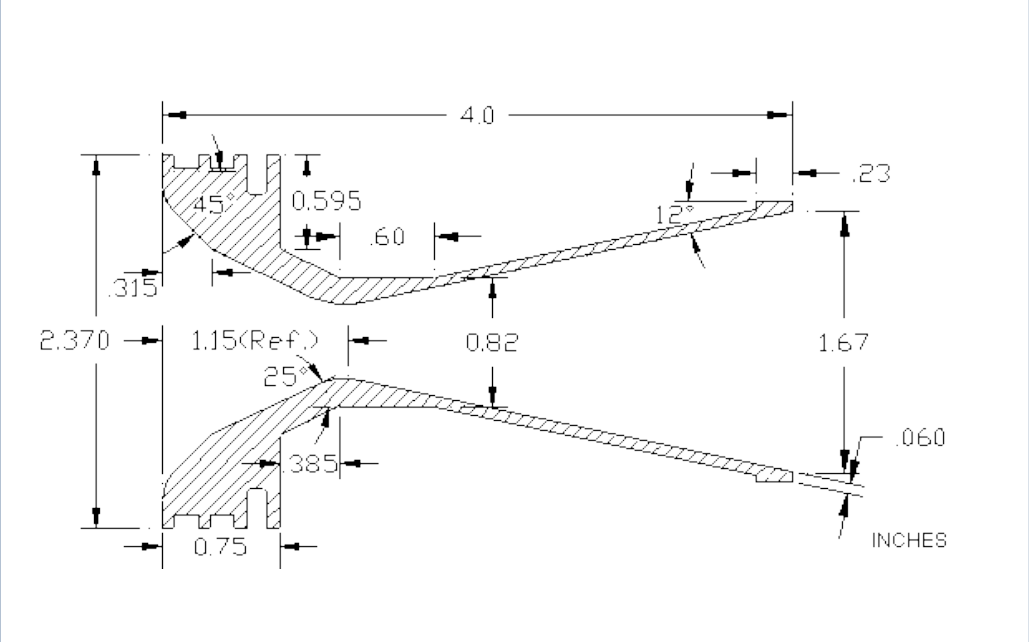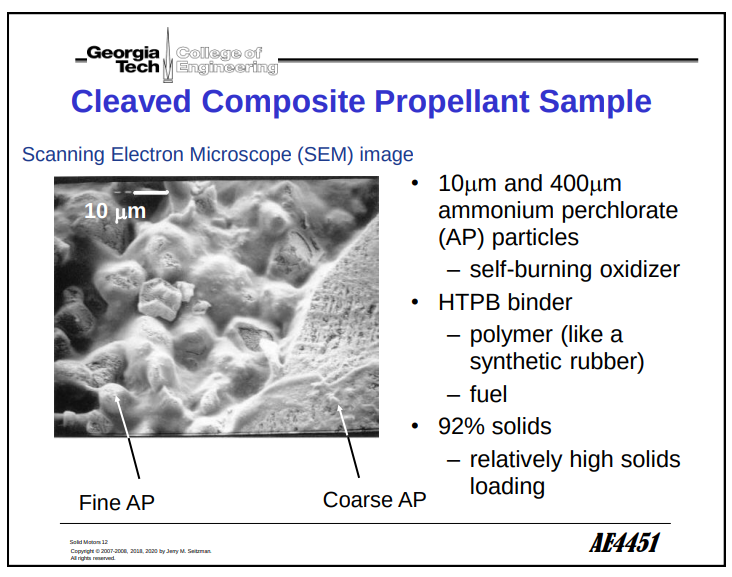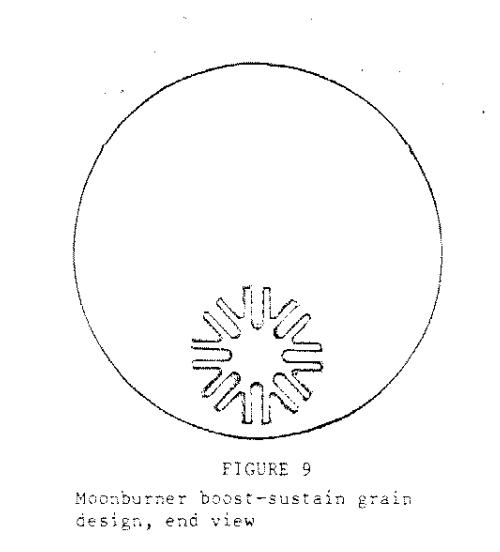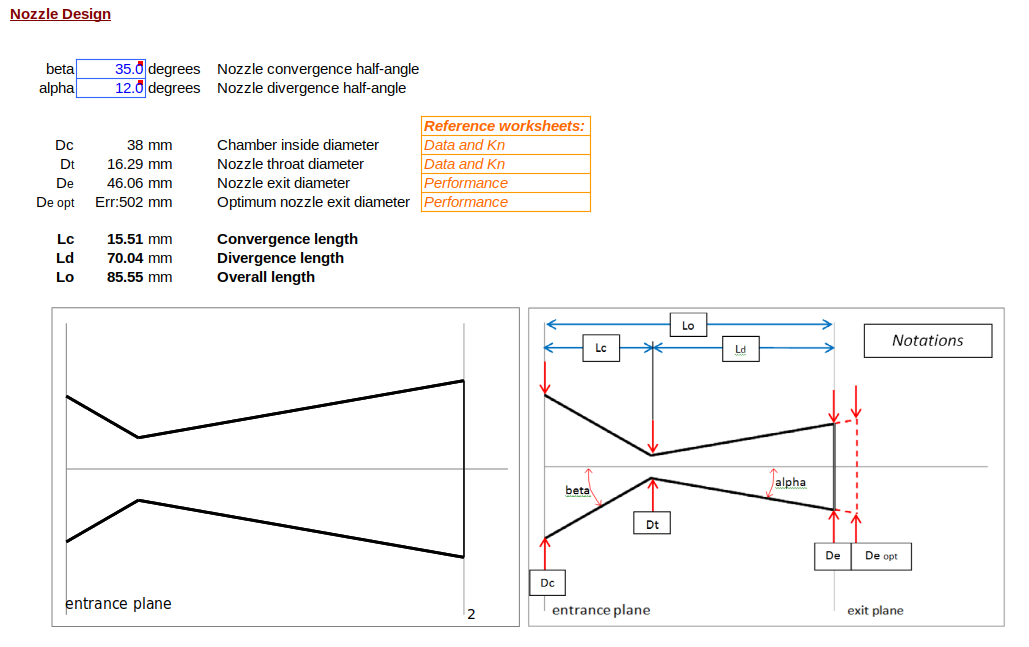Rocketeering
Building a customised 1/4 scale patriot rocket
Project maintained by shaunlowis Hosted on GitHub Pages — Theme by mattgraham
Custom Motor
COTS motor
HP-I280DM DMS Rocket Motor. Specs:
Motor Type: SU
Delays: 6,8,10,12,14
Diameter: 38 mm
Length: 356 mm
Total Weight: 616 g
Prop. Weight: 355 g
Avg. Thrust: 280.0 N
Initial Thrust: 311.2 N
Max. Thrust: 386.0 N
Total Impulse: 561.0 Ns
Burn Time: 1.9 s
Propellant: Dark Matter
Custom motor
First an understanding of the solid fuel combustion process is needed. The nozzle:
-
Directs and accelerate combustion gasses to high velocities. Provides Choked flow to prevent catastrophic erosive burning. (Going supersonic in the propellant core)
-
Goal is maximum thrust coefficient with minimum nozzle weight.
-
Nozzle throat area controls combustion chamber pressure and divergent angle controls thrust amplification through the coefficient of thrust.
A typical nozzle design:

The motor’s length, inner and outer diameters are summarised here.
-
The solid fuel motor has a hollow core, the interior area of which is th eburn area. The $K_n$ burning-area to throat-area ratio determines the combusiton chamber pressure.
-
The longer the motor, the greater the erosive effect, due to more combustiongases flowing.
Using the SRM excel sheet
HP-I280DM Variables used:
- Inner diameter,
Dc= 38mm - Motor length,
Lc= 356mm - Propellant type = KNDX (see $^{note}$)
- Outer diameter,
Do= 18mm - Core diameter,
do= 36mm (assumed casing thickness ~2mm) - Segment length,
Lo=Lc= 356mm (assumed 1 segment.) - Number of segments,
N= 1 - Target MEOP = 1000psi
$^{note}$ Details on the propellant type was quite difficult to find, as we are using a COTS motor. Perhaps a custom sugar motor might be an option for future launches. Regardless, a datasheet from RCS on the Metalstorm propellant for 38mm diameter solid motors is included in this repository, see:
resource_files/motor/rcs_propellant_grain_msds_11014.pdf
This mentions an Ammonium Perchlorate base with a rubber binder, which is usually HTPB. This is a typical solid fuel formulation shown below.
Credit to Georgia Tech

The AeroTech rockets use the “moonburner” grain design, shown here:

The SRM sheet (see resource_files/motor/SRM_2023.xls) is made for sugar motors, but I figured it would still
do an okay job of generating ballpark nozzle dimensions:

References
Experimental Composite Propellant by Terry McCreary, PROPEL20.xls